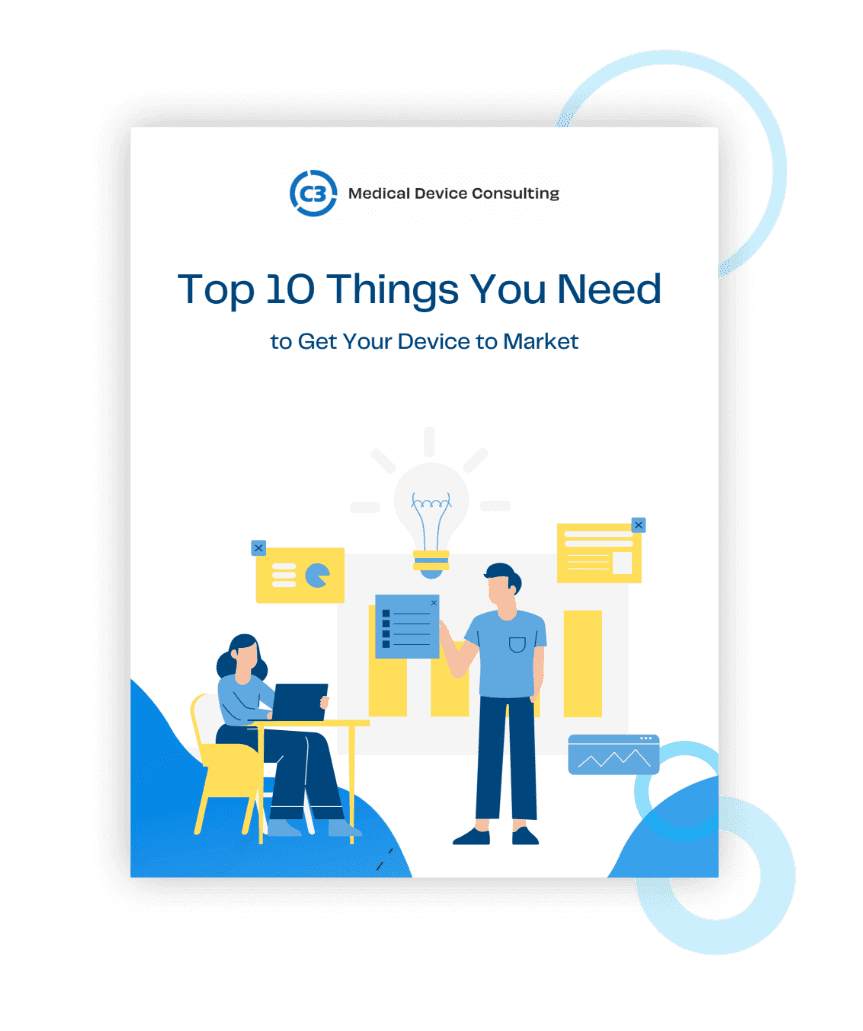Bringing new products to market takes time and money as you research a specific need or problem, design a solution, obtain regulatory approvals, manufacture, test and trial, market, and distribute it. In the medical device and technology space, the process can take years and usually means securing multiple funding sources to see your organization and its employees through.
Here are five essential steps to fundraising for medical device projects that make this daunting process more approachable.
Step 1: Identify Funding Sources
Personal savings, credit cards, and personal or business loans may be your best options in the early days of a project, especially for startups.
Soon, however, you will need larger amounts of capital. Over the lifetime of the project you may require multiple rounds of funding. Plenty of funding sources exist, but not all will be a good fit for your project, so do research to find only the most promising. Common sources of funding include:
- Grants – These usually don’t need repayment and don’t require you to exchange equity in your organization for the funding. US-based options include government agencies like the National Science Foundation (NSF) or National Institutes of Health (NIH), universities, and foundations.
- Angel investors – These are wealthy individuals willing to give a large amount of their own money, often in exchange for equity or partial ownership in your organization. As a result, these investors establish a lasting involvement with you. They are a common source for early-stage projects and start ups.
- Venture capital organizations – Venture capital means several investors pool their money into a large fund with the goal of earning a strong ROI. They want to invest in promising projects lead by experienced and effective management teams, and may have a timeline requirement for certain milestones.
Crowdfunding platforms may be another option. In this case, you’re collecting smaller amounts of money (think hundreds instead of millions) from a large number of people. It’s common to offer a perk or reward for their investment, such as the device itself; however, this may not always be feasible. Think carefully about what you can realistically offer donors. And always check with the platform to ensure you’re allowed to create a campaign for the device as heavily regulated products may be restricted.
Research each source so you understand the kinds of projects or technologies they focus on, their expectations regarding equity, their timeline for reaching milestones, and any other details that suggest a good match. Then tailor your pitch accordingly, for example, granting institutions may be focused on furthering health research where venture capitalists are looking for projects with excellent odds of success.
Step 2: Develop a Strong Business Plan
All potential investors want to know their money is going into a viable project. A well-written business plan shows you have done background research and thought through challenges. You’ll be in competition with many others so use your business plan to show the what, why, and how of your project in brief, clear words.
Typical business plans for obtaining funding should include:
- Executive summary with “must know” details
- Description of the problem, current existing solutions, how your product differs, target audience
- Market size and geographic distribution, market share analysis and projections
- Description of your product concept, current state of development, product value proposition, obstacles to adoption to overcome
- Required regulatory approvals, timeline, research/trials, IP or licensing matters
- Management team members, their expertise and roles, any open positions, other key partners (e.g., legal, accounting)
- Financial plan
- Current investment needs and milestones for this portion of the project
- Projected revenue and expenses
Search for examples online along with templates to download and fill in. Also study what your target sources say they look for in projects and address those points in your plan. When appropriate, adjust sections and phrasing to match different types of investors and their priorities.
Step 3: Build a Team with Expertise
Investors want to know their money will be used wisely. Your business plan should show you have (or have budgeted for) a team of experienced people to guide all stages of the project and continue to oversee it after it is brought to market. In addition to medical and technical expertise, your team needs business, regulatory, and financial experts to foresee and resolve challenges.
There are a number of roles critical to medical device projects, and depending on circumstances individuals may be responsible for more than one. Common roles include:
- Technical lead
- Business development
- Regulatory affairs
- Quality assurance
- Engineering
- Clinical/research affairs
- Operations/project management
- Marketing
- Financial management
- Administrative/clerical
If you are still building your team, be honest about personnel gaps and how and when you plan to fill them. For example, state if you have a search in progress or have assembled an advisory board.
Advertise open positions on your site, on professional job boards, and informally by talking with colleagues and peers in your industry. Clearly define roles and responsibilities, as well as required skills and qualifications. You’ll attract and retain the best candidates by offering competitive compensation, benefits, and paid time off (and factor these into your fundraising calculations).
Step 4: Network and Connect
Budget time and effort to attend professional conferences, trade shows (with your own booth or by attending sessions and talking to presenters and exhibit hall reps), and industry events. This kind of networking is a great way to scope out funding opportunities, or even fill gaps in your project team.
If you’re in the earliest start up stages, consider business accelerators and incubators. These are smaller-scale, local programs targeting start ups in a geographic area. They can be a source of access to office space, seed money, and exposure to others in the medtech and entrepreneurial spaces.
No matter the setting, when you network, make it fast and easy for others to understand your project and the need it fills. Ideas include:
- Develop an “elevator pitch” so you can explain it quickly and memorably in just a few seconds – about the time it takes to ride an elevator between a couple floors
- Create a business card or brochure with key takeaways, plus a QR code linking to your site, a short video, slides, or other engaging media.
Step 5: Leverage Technology
Strategic use of online technology helps you reach a wide audience. What’s more, having a curated online presence is the best way to ensure potential funders can find you again later on. Consider these options:
- Social media – Many popular platforms exist, but keeping content fresh takes time. It’s better to post on one or two platforms regularly than intermittently on five.
- Your website – Keep it up to date and user-friendly with clear navigation. Make it easy to find an explanation of the problem and solution without clicking through multiple menus. Engaging content such as a video to introduce your team, concept drawings or animations, press releases, and a contact form are great additions.
- Virtual pitch events – These web-based events are held by universities, government agencies, and foundations. Search online for events that are a natural fit for your project such as pediatrics or cardiology, as well as more general medtech-focused events. At their core these are competitions, so aim to show that you are the perfect match for the sponsoring organization. Keep slides brief yet engaging, avoid excessive jargon, practice answering questions (anticipate the tough ones!), and know your audience. Brush up on the technology being used and make sure your background and lighting are top-notch.
- Crowdfunding can be a great way to reach a large and targeted audience and create buzz; however, make sure your product is permitted on the platform. Many exclude heavily regulated products.
Using the steps outlined here for careful planning, a thorough business plan, networking, and leveraging technology you can reach a variety of potential funders for your medical device project. If you need help getting started or have additional questions, contact the C3 team today!










